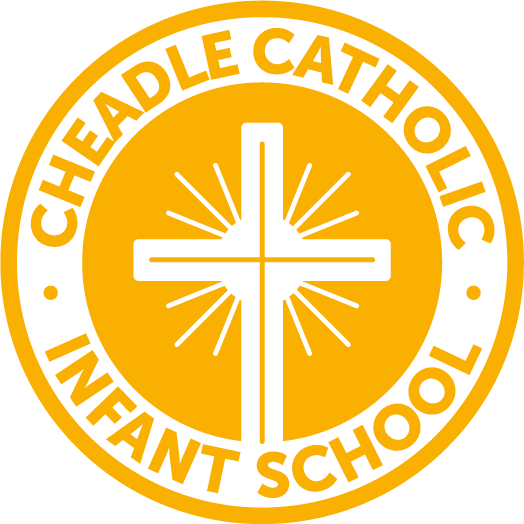Prayer at Cheadle Catholic Infant School
Prayer at Cheadle Catholic Infant School
“Teaching the young how to pray, and not simply requiring them to pray at set
times and on certain occasions is both profoundly educational and spiritually
invigorating. It is the most direct and positive way to help the young discover
their inner selves and begin a lifelong process of growth.”
Cardinal Basil Hulme.
Prayer is an integral part of our school life at Cheadle Catholic Infant School as an expression of our faithful love for God. Children should develop their understanding that God is always there for them and that they can pray or speak to him at any time, both formally and informally.
As the children move forward on their journey of faith, the opportunities for prayer that they experience in school should enable them to deepen their personal relationship with God.
At Cheadle Catholic Infant School, we aim to:
-Create and maintain a stimulating and appropriate environment where prayer can be fostered and developed fully.
-Provide children with opportunities to use the language of prayer, (praising, thanking, asking, saying sorry, meditation and quiet reflection) in a meaningful and respectful way.
-Teach children traditional and school prayers, introduced gradually from Foundation to Year 2.
-Give children opportunities to use/create their own prayer
Traditional Prayers (From Foundation Stage to Year 2) +See appendix
The sign of the Cross.
The Our Father
The Hail Mary
Glory Be (Year 2 onwards)
Eternal Rest (Year 2 onwards)
Act of Contrition (Year 2 onwards)
School Prayers (From Foundation Stage to Year 2) *See appendix
Prayer for the start of the school day
Prayer before lunch
Prayer after lunch
Prayer at the end of the school day
Expectations for Prayer Composition.
Prayers should be created in a ‘prayerful’ or ‘worshipful’ context and generally fall into three categories- ‘thank you’, ‘sorry’ and ‘please’. They can be linked to the liturgical year, sacramental program, or the topics within the ‘Way, Truth and Life’ scheme of work. Children are always encouraged to make their prayers as individual as possible.
Each class has their own ‘Prayer Book’(which they can add to at any time) and prayer area draped in the liturgical colours of the year.
All children should know that a prayer begins with ‘Dear God/Lord/Jesus/Mary’ and ends with ‘Amen’.
Foundation Stage children should be able to write/say a sentence using, ‘thank you’, ‘sorry’ or ’please’
Year 1 children should begin to write a series of sentences saying, ‘thank you’, ‘sorry’ or ‘please’.
Year 2 children should extend their prayer writing further by using more religious language and making links with the traditional prayers that they already know.
Appendix
Traditional Prayers
The Sign of the Cross
In the name of the father, and of the Son and of the Holy Spirit. Amen.
Hail Mary
Hail Mary, full of grace, the Lord is with thee.
Blessed art thou among women,
and blessed is the fruit of thy womb, Jesus.
Holy Mary, Mother of God, pray for us sinners,
now, and at the hour of our death.
Amen.
Our Father
Our Father, who art in Heaven, hallowed be Thy Name.
Thy Kingdom come, thy will be done, on earth, as it is in heaven.
Give us this day our daily bread
and forgive us our trespasses as we forgive those who trespass against us;
and lead us not into temptation, but deliver us from evil.
Amen.
Glory Be
Glory be to the Father, and to the Son, and to the Holy Spirit,
as it was in the beginning, is now, and ever shall be, world without end.
Amen.
Eternal Rest
Eternal rest give unto them, O Lord. And let perpetual light shine upon them. May they
rest in peace. Amen.
Act of Contrition
O My God, because you are so good, I am very sorry that I have sinned against you, and
by the help of your grace, I will not sin again. Amen
